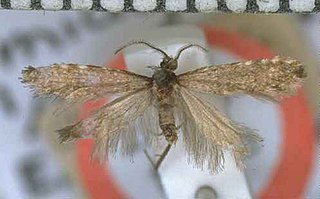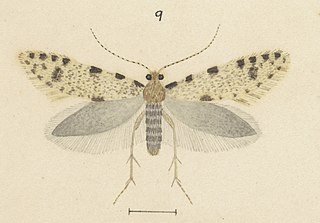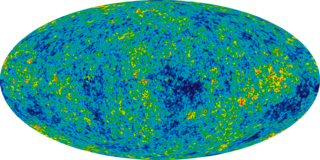Comes, translated as count, was a Roman title, generally linked to a comitatus or comital office.

Physical computing involves interactive systems that can sense and respond to the world around them. While this definition is broad enough to encompass systems such as smart automotive traffic control systems or factory automation processes, it is not commonly used to describe them. In a broader sense, physical computing is a creative framework for understanding human beings' relationship to the digital world. In practical use, the term most often describes handmade art, design or DIY hobby projects that use sensors and microcontrollers to translate analog input to a software system, and/or control electro-mechanical devices such as motors, servos, lighting or other hardware.

Pecetto di Valenza is a commune of the Province of Alessandria in the Piedmont region of northwest Italy with a population of 1282. It is south of the river Po, and about 8 kilometres (5 mi) northeast of the provincial capital of Alessandria, on an eastern spur of the hills of the Basso Monferrato. The commune's neighbours are Alessandria, Bassignana, Montecastello, Pietra Marazzi, and Valenza.

Caffè Florian is a coffee house situated in the Procuratie Nuove of Piazza San Marco, Venice. It was established in 1720 and is the oldest coffee house in continuous operation in Italy, and one of the oldest in the world.

The title vir illustris is used as a formal indication of standing in late antiquity to describe the highest ranks within the senates of Rome and Constantinople. All senators had the title vir clarissimus ; but from the mid fourth century onwards, vir illustris and vir spectabilis were used to distinguish holders of high office.

Lucilia illustris is a member of the fly family Calliphoridae, commonly known as a blow fly. Along with several other species, L. illustris is commonly referred to as a green bottle fly. Lucilia illustris is typically 6–9 mm in length and has a metallic blue-green thorax. The larvae develop in three instars, each with unique developmental properties. The adult fly typically will feed on flowers, but the females need some sort of carrion protein in order to breed and lay eggs.

The Loggia Rucellai is an Italian Renaissance loggia in Florence, Italy. It stands opposite Palazzo Rucellai in the Via della Vigna Nuova, and faces onto Piazza de' Rucellai. It was built by Giovanni di Paolo Rucellai in the 1460s; it may have been designed by Leon Battista Alberti, but this attribution is disputed. Originally intended as a place for the Rucellai family to have weddings and other celebrations, it is now glazed and used as a shop.

The House of Cerva or Crijević was a Ragusan noble family from Ragusa, which held noble titles in the Republic of Ragusa, and in the Austrian and Austro-Hungarian empires. Descendants of the family live in Austria and Italy.
Celaenorrhinus illustris, commonly known as the illustrious sprite, is a species of butterfly in the family Hesperiidae. It is found in Nigeria, Cameroon, Equatorial Guinea, Gabon, the Republic of the Congo, the Central African Republic, the Democratic Republic of the Congo and Uganda. The habitat consists of forests.
Sparganothis illustris is a species of moth of the family Tortricidae. It is found on Honshu island in Japan.

Reductoderces araneosa is a moth of the family Psychidae. It was described by Edward Meyrick in 1914. It is endemic to New Zealand and can be found in the lower part of the South Island. The preferred habitat of R. araneosa is on the edge of native beech forest. The larvae construct a case made from silk, moss and lichens and emerge from it to feed. The female of this species is wingless. The males of this species are on the wing in November and February and have been captured in the early morning.

Reductoderces microphanes is a moth of the family Psychidae. This species is endemic to New Zealand. R. microphanes is a bagworm moth and its larvae likely feed on lichen or algae. Historically there has been some confusion over the identification of this species with George Hudson mistakenly describing and illustrating unnamed species and then attributing those descriptions and illustrations to this species. Charles Edwin Clarke discussed this species stating that it and its close relatives were active and able to be collected in damp mists before sunrise.

Reductoderces fuscoflava is a moth of the Psychidae family. It was described by Salmon and Bradley in 1956. It is found on Campbell Island.
Reductoderces aucklandica is a moth of the family Psychidae. It was described by John S. Dugdale in 1971. It is found on the Auckland Islands in New Zealand.

Reductoderces cawthronella is a moth of the Psychidae family. It was described by Alfred Philpott in 1921 and named in honour of the Cawthron Institute. It is endemic to New Zealand and has been collected in Nelson on the Maitai Valley side of the Botanical Hill. The larvae inhabits a fragile, pear shaped case and it has been hypothesised that they are lichen or alga browsers. Larvae pupate at the end of June and adults emerge at the beginning of August until the middle of October.

The Illustris project is an ongoing series of astrophysical simulations run by an international collaboration of scientists. The aim is to study the processes of galaxy formation and evolution in the universe with a comprehensive physical model. Early results were described in a number of publications following widespread press coverage. The project publicly released all data produced by the simulations in April, 2015. Key developers of the Illustris simulation have been Volker Springel and Mark Vogelsberger. The Illustris simulation framework and galaxy formation model has been used for a wide range of spin-off projects, starting with Auriga and IllustrisTNG followed by Thesan (2021), MillenniumTNG (2022) and TNG-Cluster (2023).
There has been many regnal styles of Serbian sovereigns.
Neoempheria illustris is a species of fungus gnats in the family Mycetophilidae.

Giovanni Battista Lercari was the 64th Doge of the Republic of Genoa.

Reductoderces is a genus of moths of the Psychidae family. This genus is endemic to New Zealand and the type species is Reductoderces fuscoflava.













